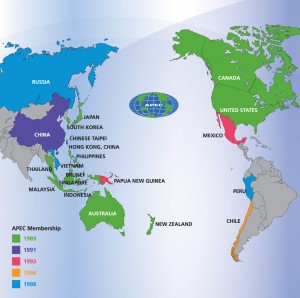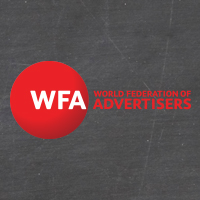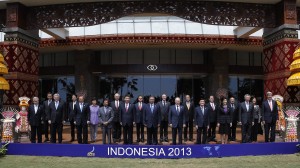 For the first time in its twenty-five year history, Asia-Pacific Economic Cooperation (APEC) looks to promote coherent advertising standards across the 21 Pacific Rim member economies in order to promote trade, writes Will Gilroy
For the first time in its twenty-five year history, Asia-Pacific Economic Cooperation (APEC) looks to promote coherent advertising standards across the 21 Pacific Rim member economies in order to promote trade, writes Will Gilroy
In June 2004, when the EU grew from fifteen to twenty-five member states, the European Commission challenged the European advertising industry to create ‘a better system of advertising self-regulation for a bigger Europe.’ The primary incentive of the Commission was to be able to afford acceding citizens to the European Union from countries as diverse as Cyprus, Hungary and Latvia the same consumer protection that they were given in Germany, UK and France.
This led to a flurry of activity from the industry coordinated by the European Advertising Standards Alliance. Industry self-regulatory infrastructures were quickly established from Lisbon to Nicosia and Tallinn to Ljubljana on the basis of the EASA Charter Ten Best Practice Principles, an agreed checklist of core components which make for effective industry-led advertising standards.
Today, nearly every member state of the EU has a Self-Regulatory Organisation (SRO) in place which monitors, polices and enforces advertising codes of conduct and provides consumers and industry with an independent body which can process complaints and competitor disputes. It has been a remarkable achievement in such a short space of time and is testament to the European advertising industry’s ability to take its responsibilities seriously.
Ten years on, the global industry has a greater responsibility still. In 2012, APEC launched the Advertising Regulatory Capacity Building Mentoring (ARCAM) programme in order to identify best practice in advertising standards and identify ways in which they might be able to seek greater regulatory convergence across APEC economies.
The rationale was very different to that of the European Union. Rather than looking at the world through the prism of consumer protection, APEC is an organisation charged with promoting trade and there is growing acknowledgment within that advertising regulation that does not meet best practice constitutes a barrier to trade and is likely to reduce competitiveness and economic output. Conversely, increasing coherence of advertising standards across APEC markets would reduce the cost of doing business as well as non-tariff barriers to trade.
APEC also recognises that there are currently significant shortcomings in many APEC markets, particularly in the emerging markets of East and South East Asia. Foreign companies entering the market are often faced with swathes of red tape and a myriad of idiosyncrasies and legal uncertainties. Entering Vietnam, Indonesia or China can prove a daunting prospect for US or European companies not used to the local ropes.
But the economic prize is too great. Six of the top ten contributors to global ad spend growth (USA, China, Indonesia, Japan, Korea and Russia) between 2013 and 2016 will be APEC economies. APEC accounts for approximately 54% of the world’s gross domestic product and about 44% of world trade. APEC countries represent 40% of the world’s population.
By creating clear industry standards and more transparent processes for the approval and airing of advertising content and giving industry a greater stake in policing itself, APEC would make it less costly for local companies to bring product to market and simpler for foreign companies to ensure compliance with local standards. All this would likely lead to increased trade and competition and higher advertising spend, which APEC knows to be intrinsically correlated to economic growth.
On top of this, it would be laying the framework for the EU’s noble ambition and afford greater protection to APEC consumers. Realistically, the APEC process is not going to increase consumer rights in US, Canada or Australia where they are already well enshrined - but it might just provide a blueprint for a system which over time improves consumer protections in China and Vietnam, for instance, while properly weighing the interests of companies and their ability to drive economic growth - which is ultimately the most sustainable form of consumer welfare in an emerging economy.
Indeed, a reality check is needed. APEC represents 21 countries, very few of which have a great deal in common. For those who bemoan the lack of EU consensus and homogeneity, the reality of having to drive an APEC agenda on a daily basis would likely paralyse them with shock. Nor do the member countries hand over decision-making or sovereignty in the same way that EU member states do. APEC represents a light-touch, aspirational vision, created in part as a reaction to the advent of other global trading blocs around the world.
But that is not to say that greater convergence of advertising standards between APEC countries is a pipe dream. In November 2012, the Australian Advertising Standards Bureau (ASB) hosted a Dialogue on Best Practice in Advertising Standards in Hanoi at which WFA keynoted with P&G on the importance of advertising to the economy. This coincided with the Vietnamese government’s own review of the Vietnamese Ad Law in which they foresee the potential development of industry-led codes of conduct and an independent ‘Advertising Appraisal Council.’
Two years later, the Chinese Advertiser Association (again alongside the Australians on account of ASB’s tireless work) will be hosting a two day workshop in Beijing on August 8th and 9th 2014 alongside other global industry partners including WFA, EASA and the International Chamber of Commerce.
A great deal of the focus will be given to fostering a better understanding of global best practice in advertising standards and how they can be customised to a Chinese reality. Crucially, this has the support from Chinese government and Chinese industry during the year that China hosts APEC.
With APEC’s initiative, it is hard not to see growing momentum and appetite for industry involvement in setting clear and transparent standards and processes in countries such as Vietnam, Indonesia and China. Not least as these governments witness how the more evolved industry-led set-ups in India, the Philippines and Singapore can incentivise foreign direct investment.
Time will tell if the fruits of our labours can be properly reaped. It will not happen overnight. A great responsibility falls on industry to make the case for governments to revisit their advertising frameworks so that they can deliver systems which better serve consumers, businesses and the broader economy. But the first steps have been taken.
For your company to be involved in the APEC Advertising Standards Forum and Mentoring Workshop in Beijing on August 8th and 9th, 2014, please contact Will Gilroy ([email protected])


